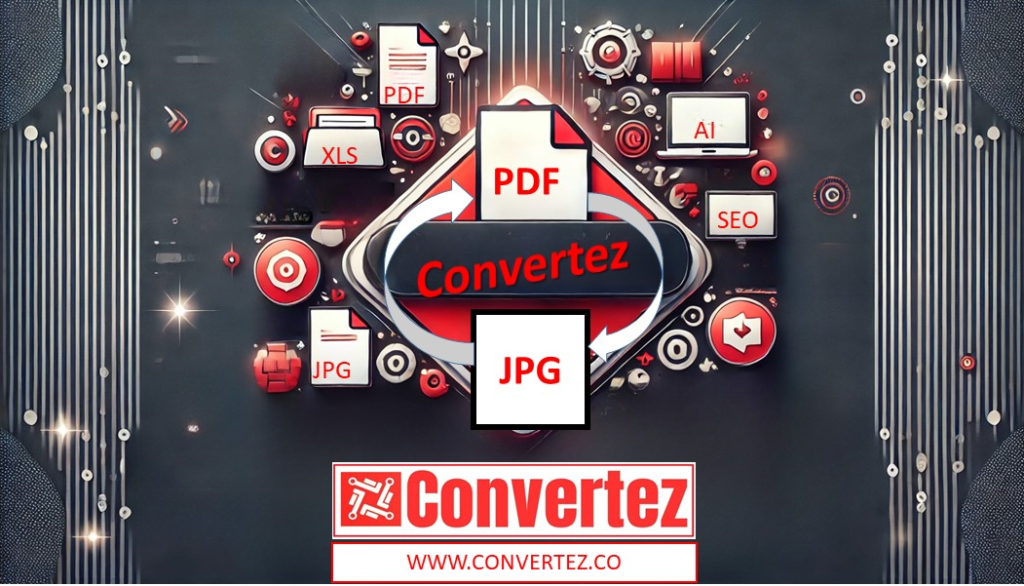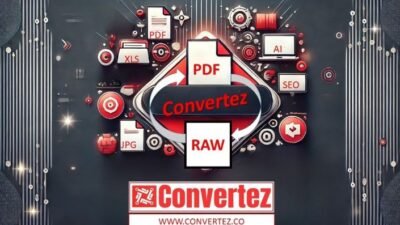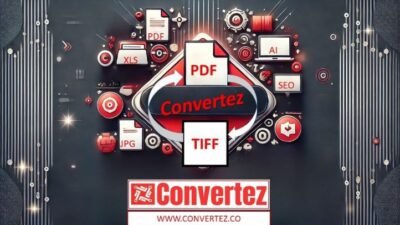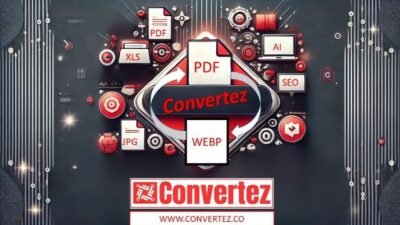In today’s digital world, documents come in all shapes and sizes. From contracts to design mockups, and from manuals to presentations, files are exchanged in various formats. Among the most widely used formats is the PDF (Portable Document Format) — ideal for preserving the formatting and layout of documents across different platforms. But what happens when you need to convert a PDF into a more flexible image format, like JPG?
This is where a PDF to JPG converter becomes incredibly useful. In this blog, we’ll cover everything you need to know about converting PDF files to JPG, including why you might need it, how it works, and the easiest way to do it — all while keeping quality and convenience in mind.
What is a PDF to JPG Conversion?
A PDF to JPG conversion refers to transforming each page of a PDF file into a static image in JPG (or JPEG) format. Instead of scrolling through a multi-page document, the content becomes accessible as standalone images — often useful for sharing, editing, or viewing on different devices and platforms.
Why Convert PDF to JPG?
There are several reasons you might need to convert a PDF into JPG format:
- Easy Sharing: JPG images are more universally supported across all devices. They can be quickly shared via email, uploaded to websites, or sent through messaging platforms.
- Faster Viewing: Image files open instantly on virtually every device, without needing special software like Adobe Reader or other PDF viewers.
- Embedding in Other Content: JPG images can be easily embedded into PowerPoint presentations, Word documents, websites, or blogs.
- Social Media Use: Platforms like Facebook, Instagram, or Twitter don’t support PDF uploads — but they do support JPG. Converting allows you to share document content as images.
- Screenshots Without Losing Quality: Instead of taking screenshots and losing resolution, converting a PDF directly to JPG maintains higher visual fidelity.

Key Differences: PDF vs. JPG
| Feature | JPG | |
|---|---|---|
| Format Type | Document | Image |
| Multi-page Support | Yes | No (Each page becomes a separate image) |
| File Size | Often smaller (text-based PDFs) | Can be larger depending on image quality |
| Editability | Limited without special tools | Easily editable with image software |
| Usage | Print, Read, Sign | View, Share, Embed |
How Does PDF to JPG Conversion Work?
When you use a PDF to JPG converter, the tool scans each page of your PDF and renders it into a visual image. Here’s a simplified breakdown:
- Upload the PDF file to the converter tool.
- Render each page into a rasterized image.
- Adjust quality settings (resolution, compression, DPI if available).
- Export each page as a separate JPG image.
Some converters offer the ability to extract only specific pages, resize output images, or adjust DPI (dots per inch) for higher resolution.
How to Convert PDF to JPG (Step-by-Step Guide)
Using Online Tools (Fast & Free)
One of the easiest ways to convert PDF to JPG is by using an online tool like Convertez. Here’s how:
- Go to the PDF to JPG conversion page on Convertez.
- Upload your PDF file (drag-and-drop supported).
- Wait for the tool to process the file.
- Download the converted JPG images (either as a ZIP or individual files).
Using Adobe Acrobat Pro (Premium)
If you’re using Adobe Acrobat Pro:
- Open the PDF in Adobe Acrobat.
- Click on
File > Export To > Image > JPEG. - Choose the destination folder and save.
This method offers higher customization but requires a paid license.
Using Desktop Software
Apps like PDFMate, Foxit PhantomPDF, or SmallPDF Desktop also offer batch conversions with offline privacy.
Things to Look for in a Good PDF to JPG Converter
When choosing a converter, look for:
- ✅ No Watermarks: Some free tools add unwanted branding to your images.
- ✅ High Quality Output: Look for options to select resolution and DPI.
- ✅ Fast Upload and Download Speeds: Especially important for large files.
- ✅ Privacy and Security: Files should be deleted after a certain period.
- ✅ Batch Conversion: Great for converting multiple PDFs at once.
With Convertez, you get all of this — and more — for free.
Use Cases of PDF to JPG Conversion
Still wondering where you might use this in real life? Here are some practical scenarios:
🔹 Designers & Creatives
Want to share design mockups saved in a PDF with clients? Converting to JPG ensures they can view it easily on any device.
🔹 Teachers & Students
Educational material often comes in PDFs. If you’re creating a presentation or study notes, turning pages into images can simplify the process.
🔹 Legal Professionals
PDF contracts converted to JPG can be embedded in presentations or used as evidence snapshots in documentation.
🔹 Content Creators
Want to turn an infographic PDF into an image for Instagram? You need a JPG version!
Tips for Best Results
- Choose the Right DPI: If you’re printing or zooming in, opt for 300 DPI. For web use, 72 DPI is usually fine.
- Preview Before Downloading: Some tools let you see the quality before downloading.
- Compress Afterwards: If the image size is too large, use a JPG compressor tool (like the one on Convertez).
- Use Batch Conversion: Saves time if you’re converting a large document or multiple files.
Conclusion
Converting PDF to JPG has become a common need in today’s content-driven, fast-paced world. Whether you’re sharing information online, embedding images into your work, or simply need easier accessibility, having a reliable PDF to JPG tool makes life easier.
With online tools like Convertez, you can convert files in seconds — without downloading software, dealing with watermarks, or sacrificing quality.



